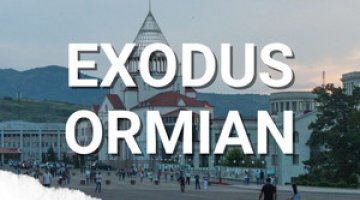Victory for the ruling party in the parliamentary election in Armenia
On 6 May the parliamentary election was held in Armenia. The election was won by the ruling party linked with President Serzh Sargsyan, the Republican Party of Armenia (RPA), which obtained over half the seats (according to initial data – 69 seats in the 131-seat parliament). The RPA's coalition partner, a Prosperous Armenia, also consolidated its position as it garnered 36 seats. The second coalition partner, the Rule of Law party, won six seats. The main opposition parties slightly exceeded the electoral threshold, which grants them a symbolic presence in parliament: the Armenian National Congress obtained 7 seats, both the Armenian Revolutionary Federation (Dashnaktsutiun) and the Heritage secured six seats each. The turnout reached 62%.
According to international observers (the Organization for Security and Co-operation in Europe, the EU, the Council of Europe) the election met the main democratic criteria. However, they pointed to a series of irregularities during the electoral campaign and on the day of the election.
Armenia for years has been mired in political and economic stagnation, which is due to the oligarchic political system and the international isolation of the country caused by the unresolved conflict over Nagorno-Karabakh. Unemployment and poverty remain severe, which causes tens of thousands of people each year to leave the country in search of better living standards.
-
The victory of the ruling elite stems to a larger extent from the fragmentation of the opposition and the lack of an appealing alternative on the Armenian political scene rather than from the government's successes in the former term. Furthermore, numerous accounts of irregularities during the electoral campaign (a substantial increase in the number of people eligible to vote, cases of vote buying, using administrative resources for election purposes) and on the day of the election (charges of ballot stuffing, cases of exhorting voters to vote for a particular party or candidate etc.) give grounds for assumptions that in a completely democratic election the victory of the ruling party would have been smaller.
-
The fact that RPA won over half of the seats in parliament enables the party to form a government on its own, which will substantially consolidate the group linked to President Sargsyan. His entourage will gain near monopolistic control over state institutions and will further strengthen its influence on Armenia's economy. The victory of RPA confirms the legitimacy of the incumbent president which was considerably undermined following the brutally quashed post-election protests in 2008. However, above all the success of RPA consolidates the position of Sargsyan before the presidential election in 2013, in which he will probably seek re-election.
-
This parliamentary election has diminished the importance of the opposition which has proven unable to come up with an alternative for the ruling party. Poor results for the main opposition party – the Armenian National Congress – (less than one per cent above the threshold) reveals the low popularity and limited political potential of the party's head and the opposition leader, the former president Levon Ter-Petrosyan. It is a Prosperous Armenia, formerly RPA's coalition partner, that is emerging as the ruling party's main rival.
- Judging by the way the election was conducted and its results it may be inferred that the political and economic system which has been in place to date will be preserved as will Armenia’s foreign policy and its stance on the conflict in Nagorno-Karabakh.





